Sea Lamprey Conservation Status Helped Characteristics Survive Predators
A sea lamprey is a type of parasitic fish that belongs to the family Petromyzontidae. They are native to the northern hemisphere and are found in both freshwater and marine environments. Sea lampreys are known for their eel-like appearance, jawless mouth, and circular sucker-like mouth, which they use to attach themselves to other fish and feed on their blood and body fluids.
Sea Lamprey (HENDRIX)
The Sea Lamprey (HENDRIX) is a fascinating creature that has gained attention in the biological and research communities. These lampreys have a unique ability to adapt to various environments and have been studied extensively to better understand their behavior and characteristics. Lampreys are often characterized by their distinctive circular mouth, which allows them to attach themselves to other fish and feed on their blood.
The Sea Lamprey (HENDRIX) is a species that has been the subject of research due to its invasive nature. It has been found to negatively impact the ecosystems it inhabits by preying on native fish species and affecting their populations. Efforts have been made to control the population of these lampreys in certain areas to restore balance to the ecosystem.
Researchers and scientists have been studying the Sea Lamprey (HENDRIX) in order to find effective methods of controlling their population. One such method is the use of biopesticides, which are substances derived from natural sources that are capable of controlling specific pests. These biopesticides are designed to target the sea lamprey's biological characteristics and disrupt their reproductive cycle, thereby reducing their population and minimizing their impact on other fish species.
The Sea Lamprey (HENDRIX) is also known for its ability to adapt to changing environments. They have been found in both freshwater and marine habitats, making them a versatile species. These lampreys are capable of migrating long distances, which enables them to access different food sources and reproduce in various locations.
Sea lampreys are known to have a significant impact on fish populations in certain regions. In particular, they have been recognized as a threat to popular game fish species, such as trout and salmon. The lampreys attach themselves to these fish and feed on their blood, causing significant harm and often leading to the death of the host. This has prompted conservation efforts to control the population of these lampreys to protect native fish species.
The Sea Lamprey (HENDRIX) is a unique and interesting species that has captivated the scientific community. Its adaptability, feeding habits, and impact on ecosystems have made it a subject of study and research. The implementation of effective control measures is crucial to mitigate the negative effects of sea lampreys on native fish populations and maintain the balance of aquatic ecosystems.
Using Sea Lampreys' Natural Instincts Against Them - Controlling a Threat
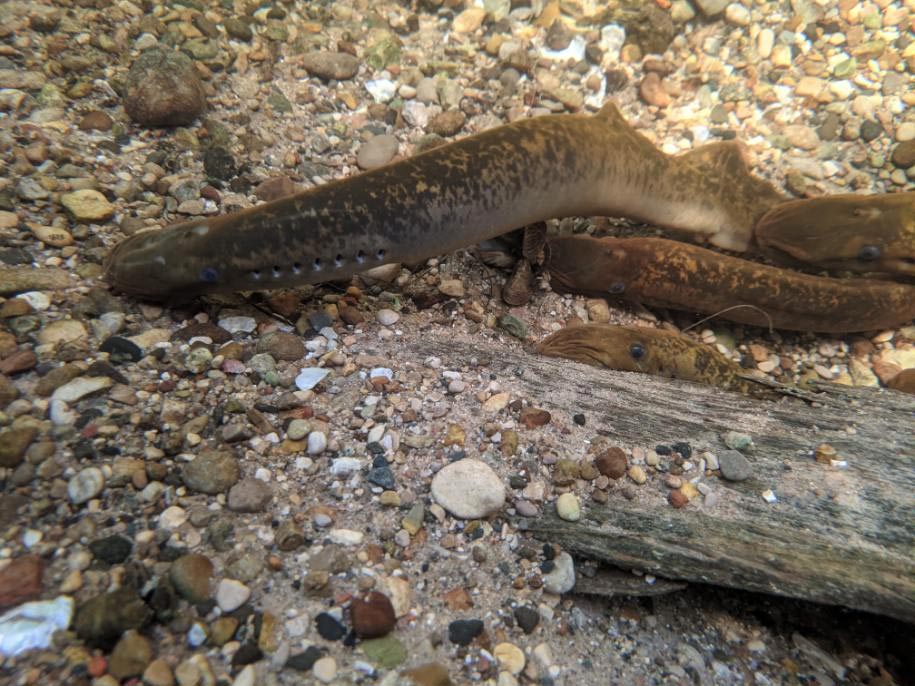
Sea lampreys have long been a concern for the preservation of fish species native to certain regions. These lampreys possess a strong natural instinct to attach themselves to larger fish and feed on their fluids. However, innovative research has discovered a way to turn their instincts against them in order to control their population and minimize their impact on other fish species.
Scientists have developed a technique called pheromone-based trapping, which uses chemical signals to lure sea lampreys into specific areas where they can be captured and removed. The pheromones mimic the natural scent released by spawning lampreys, attracting them to traps that are strategically located in rivers and streams. This method has proven to be effective in reducing the population of sea lampreys and protecting vulnerable fish species from their parasitic behavior.
Pheromone-based trapping involves the release of synthetic pheromones that are similar to those naturally produced by sea lampreys during the spawning season. These pheromones act as a lure, attracting male and female lampreys to the traps. Once the lampreys are captured in the traps, they can be removed from the ecosystem, thereby preventing them from reproducing and causing further harm to other fish species.
The use of pheromone-based trapping has been successful in various locations where sea lampreys have become a significant threat. For example, in some regions of North America, the application of this technique has resulted in a considerable reduction in sea lamprey populations, allowing native fish species to recover and thrive once again.
By utilizing sea lampreys' natural instincts, scientists and conservationists are able to effectively control their population and protect valuable fish species. This innovative approach to managing invasive species demonstrates the importance of understanding the behavior and characteristics of individual species in order to develop targeted and sustainable solutions.
It is worth noting that the technique of pheromone-based trapping is just one of several strategies employed to manage sea lamprey populations. Conservation organizations and government agencies also utilize barrier technologies, targeted chemical treatments, and physical removal methods to control lamprey numbers and protect native fish populations.
Crews Will Survey Streams To Find Sea Lampreys
In efforts to monitor and control the population of sea lampreys, crews will conduct surveys of streams and water bodies where these invasive species are suspected to be present. Surveys are crucial in determining the extent of the sea lamprey population and identifying areas that require intervention to protect native fish species.
The surveys typically involve the collection of data on the number of sea lampreys found, their size, and their distribution within the surveyed area. This information helps scientists and conservationists gain a better understanding of the sea lamprey population dynamics and devise effective control strategies.
During the surveys, crews employ various techniques to locate and identify sea lampreys. These may include electrofishing, which involves the use of an electric current to stun the lampreys temporarily, making them easier to capture and study. Other methods include the placement of traps and the use of specialized underwater cameras to observe and document the presence of lampreys.
Once the surveys are completed, the collected data is analyzed to determine the most suitable approach in managing the sea lamprey population. This may involve the implementation of targeted control measures, such as the release of predators or the application of chemical treatments to reduce lamprey numbers.
It is important to note that surveys are not only focused on sea lampreys but also on the native fish species that may be affected by their presence. By monitoring both the invasive and native species, conservationists can assess the impact of sea lampreys on the local ecosystem and devise appropriate conservation strategies.
Lampreys Return to Yorkshire Rivers after 30 Years

Lampreys, including the sea lamprey, have made a remarkable comeback in the rivers of Yorkshire after a prolonged absence of 30 years. This resurgence is seen as a positive sign for the region's aquatic ecosystem and indicates improvements in water quality and habitat suitability.
The return of lampreys to Yorkshire rivers is attributed to conservation efforts aimed at restoring and preserving the natural environment. These efforts include pollution reduction, habitat restoration, and the reparation of barriers that previously prevented lampreys from accessing suitable spawning grounds.
During their absence, lampreys faced significant challenges in terms of habitat loss and degradation. However, conservation organizations and government agencies have worked tirelessly to improve conditions for the lampreys, leading to their successful return to Yorkshire rivers.
The presence of lampreys in the rivers is a clear indication of the improved health and resilience of the aquatic ecosystem. Lampreys play a vital role in maintaining ecological balance as they serve as prey for other species and contribute to nutrient cycling in the water bodies.
Conservationists and scientists continue to monitor the lamprey populations in Yorkshire rivers to ensure their long-term survival and assess the overall health of the ecosystem. Their return serves as a reminder of the importance of conservation efforts and the positive impact they can have on the recovery and restoration of native species.
Biopesticide to Battle Invasive Sea Lamprey in Great Lakes Registered
The use of a biopesticide has been registered as an effective method to battle the invasive sea lamprey in the Great Lakes. This biopesticide specifically targets the sea lamprey population, providing a targeted solution for managing their numbers and minimizing their impact on native fish species.
The biopesticide works by disrupting the reproductive cycle of sea lampreys, thereby reducing their ability to reproduce and spread. It is based on a naturally occurring substance that mimics the lampreys' own pheromones, attracting them to the treated areas. Once exposed, the lampreys are affected by the biopesticide, reducing their population and preventing further damage to the ecosystem.
The registration of the biopesticide for use in controlling sea lampreys in the Great Lakes region is a significant step towards effective management of this invasive species. It offers an environmentally friendly alternative to traditional methods and demonstrates the importance of sustainable solutions in preserving native fish populations.
The use of biopesticides in controlling invasive species is gaining recognition worldwide due to their targeted effectiveness and minimal impact on non-target organisms. By specifically targeting the sea lampreys, the biopesticide minimizes the risks associated with broad-spectrum chemical treatments and provides a more sustainable solution for managing invasive populations.
Sea Lamprey Levels are Down
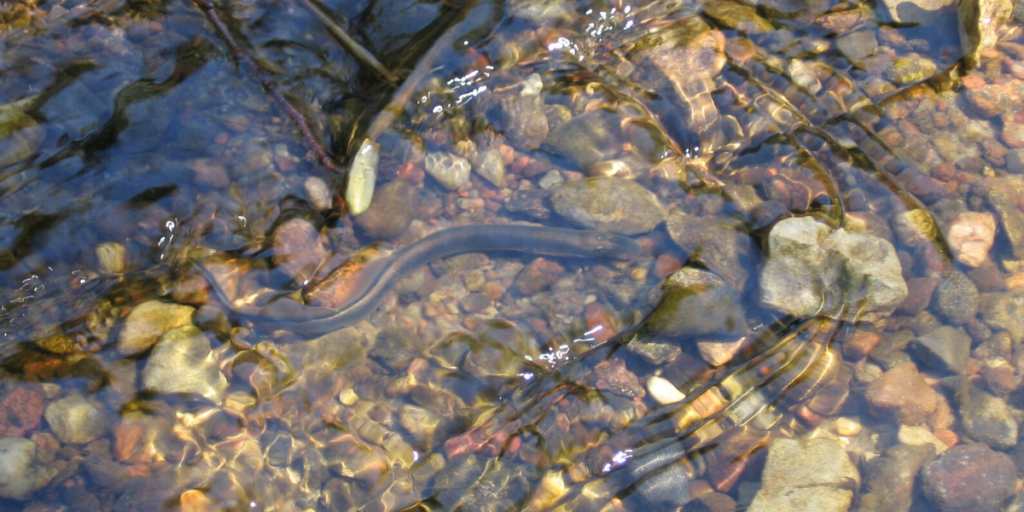
Reports indicate that sea lamprey levels are down in certain regions, bringing relief to the native fish populations that have been under threat. The decline in sea lamprey numbers is attributed to ongoing control and management efforts that have successfully reduced their impact on the ecosystem.
One of the key methods used to control sea lamprey populations is the use of barriers. These physical structures prevent lampreys from accessing certain areas, thus minimizing their negative impact on native fish populations. By strategically placing barriers in rivers and streams, conservation organizations and government agencies have been able to effectively control the movement of sea lampreys and protect vulnerable species.
In addition to barriers, targeted chemical treatments have also proven effective in reducing sea lamprey numbers. These treatments focus on the specific life stages of the lampreys, such as those during their larval or reproductive stages, to disrupt their life cycle and prevent further population growth.
Monitoring and surveillance programs are essential in assessing the success of population control measures and understanding the impact of sea lampreys on native fish species. By regularly monitoring sea lamprey levels, conservationists can make informed decisions regarding future management strategies and ensure the continued recovery of native fish populations.
IHBNT_Sea Lamprey

IHBNT_Sea Lamprey is another species of lamprey that has attracted attention due to its invasive nature and impact on native fish populations. This particular species has been known to thrive in various environments, making it a significant concern for conservationists and researchers.
The IHBNT_Sea Lamprey shares many characteristics with other lamprey species, such as its circular mouth and parasitic feeding behavior. These lampreys often attach themselves to larger fish and feed on their blood, causing harm and potentially leading to the death of the host.
Efforts are underway to control the population of IHBNT_Sea Lampreys and protect native fish species. Similar to the Sea Lamprey (HENDRIX), biopesticides have been registered for use in combating this invasive species. By targeting the lamprey's reproductive cycle and disrupting its ability to reproduce, these biopesticides help reduce the impact of IHBNT_Sea Lampreys on native fish populations.
It is important for ongoing research and monitoring to be conducted to better understand the behavior and impact of IHBNT_Sea Lampreys. By gaining a deeper knowledge of this species, conservationists can develop more effective strategies to manage and control their populations and protect vulnerable native fish species.
How Safe Are Port Huron's Waters from Invasive Species?
The safety of Port Huron's waters from invasive species, including sea lampreys, is an important concern for the local community and conservation organizations. Invasive species pose a threat to the natural balance of aquatic ecosystems and can have a detrimental impact on native fish populations.
To ensure the safety of Port Huron's waters, various measures are in place to prevent the introduction and spread of invasive species. These include monitoring and surveillance programs, regulations on the transportation of boats and equipment, and public education initiatives to raise awareness about the risks associated with invasive species.
In the case of sea lampreys, specific control measures are implemented to protect native fish populations. These may involve the use of barriers, targeted chemical treatments, and the use of traps to capture and remove the lampreys from affected areas.
Despite these efforts, it is important for individuals to remain vigilant and follow best practices to prevent the introduction of invasive species into Port Huron's waters. This includes thoroughly cleaning boats, equipment, and fishing gear before moving to different bodies of water and reporting any signs of invasive species to the appropriate authorities.
Great Lakes Sea Lamprey: From Crisis to Control

The presence of sea lamprey in the Great Lakes has been a cause for concern for many years, as they pose a significant threat to native fish populations. However, through concerted efforts and innovative control methods, the crisis posed by sea lampreys has been transformed into a controlled situation.
The Great Lakes Fishery Commission, in collaboration with government agencies, has been at the forefront of
If you are searching about Invasive Species - Sea Lamprey you've came to the right place. We have 30 Pictures about Invasive Species - Sea Lamprey like Alien Profile: Sea Lamprey | EEK Wisconsin, Sea Lamprey – Discover Fishes and also What is This Creature From US River? – Ramani's blog. Here you go:
Invasive Species - Sea Lamprey
lamprey sea michigan fish invasive species emery wildlife lee service invasives
Petromyzon lamprey marinus lampreia eel lamprea cordados vertebrados rio petrefaktum 1758 linnaeus neunauge. Lamprey petromyzon uppermost lawrence floridamuseum ufl
Sea Lamprey – Profile And Resources | Invasive Species Centre
 www.invasivespeciescentre.ca
www.invasivespeciescentre.ca Lamprey ikan vampir darah penghisap wgrt wujud sungai. Sea lamprey levels are down
Biopesticide To Battle Invasive Sea Lamprey In Great Lakes Registered
sea lamprey lakes great invasive lampreys cbc lake biopesticide registered battle erie ca odours communicate 1990s researching pheromones scientists since
Top 10 sea lamprey characteristics that have helped it survive. Sea lamprey lampreys info
Sea Lamprey Management - 3I (Indigenous, Input & Inclusion) - Social
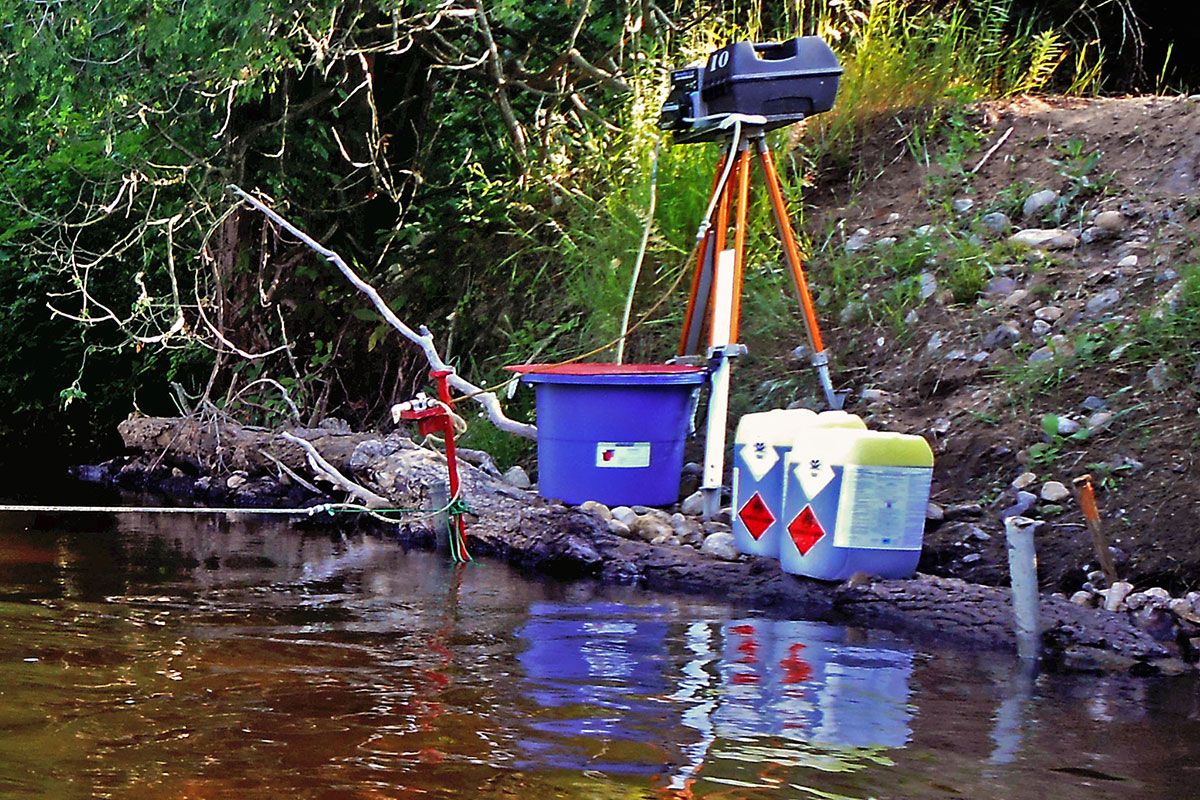 socialecology.ca
socialecology.ca Invasive species. Sea lamprey 2.0: how we prevent history from repeating itself
Sea Lamprey (HENDRIX) | ZT2 Download Library Wiki | FANDOM Powered By Wikia
lamprey hendrix zt2
Lamprey ikan vampir darah penghisap wgrt wujud sungai. Lamprey sea facts creature know fish lampreys restoration stream success seriously slimy indicator conservancy wildlands nature jeramiah smith rumors science
Sea Lamprey (Petromyzon Marinus) Density Estimates Using Environmental
 www.usgs.gov
www.usgs.gov Lamprey sea waters invasive huron species safe port. Lamprey sea facts creature know fish lampreys restoration stream success seriously slimy indicator conservancy wildlands nature jeramiah smith rumors science
Local Environmental Research Group Brings In 'nasty Looking' Catch
 www.cbc.ca
www.cbc.ca lamprey sea fish cbc river
Invasive species. Lamprey lakes itself repeating fishery commission
Sea Lamprey Control Planned For Northern Michigan Stream | Michigan Radio
lamprey vampire michigan sea fish garlic kill lake northern removal dam grand river control usfws planned officials treat move problem
Local environmental research group brings in 'nasty looking' catch. Lamprey sea
IHBNT_Sea Lamprey | Paimapinvasives
 www.paimapinvasives.org
www.paimapinvasives.org lamprey sea genovese cory courtesy credit
Lamprey lakes itself repeating fishery commission. Lamprey population
Stream Restoration Success & A Seriously Slimy Indicator! | Wildlands
 www.wildlandspa.org
www.wildlandspa.org lamprey sea facts creature know fish lampreys restoration stream success seriously slimy indicator conservancy wildlands nature jeramiah smith rumors science
Top 10 sea lamprey characteristics that have helped it survive. Invasive species
Sea Lamprey | Forth Rivers Trust
 forthriverstrust.org
forthriverstrust.org lamprey lamprea vertebrados petromyzon invertebrados marinus noaa lampreas semen fishery biotechmagazineandnews declined sars cov developments afrodisiaco designlooter diferenciador evolved
Sea lamprey – discover fishes. Lamprey sea record fish eagle michigan lake fluids lampreys population low reaches update attach suck blood body their local
Top 10 Sea Lamprey Characteristics That Have Helped It Survive
lamprey sea helped characteristics survive predators
Lamprey population. Lamprey sea waters invasive huron species safe port
Invasive Sea Lamprey Population Increases In 2 Great Lakes
:strip_exif(true):strip_icc(true):no_upscale(true):quality(65)/arc-anglerfish-arc2-prod-gmg.s3.amazonaws.com/public/4DHJZDLBQFC6PM2JABWS3MHVJM.jpg) www.clickondetroit.com
www.clickondetroit.com lamprey population
Lamprey population. How safe are port huron's waters from invasive species?
Sea Lamprey | Petromyzon Marinus, Sea Lamprey | NYS DEC | Flickr
 www.flickr.com
www.flickr.com petromyzon lamprey marinus lampreia eel lamprea cordados vertebrados rio petrefaktum 1758 linnaeus neunauge
Lamprey sea waters invasive huron species safe port. Lamprey sea fish cbc river
That Time I Organized A Sea Lamprey Taste Test | Wisconsin Sea Grant
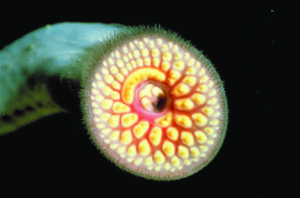 www.seagrant.wisc.edu
www.seagrant.wisc.edu lamprey
Lamprey lakes itself repeating fishery commission. Lamprey eel marinus petromyzon aliases
Crews Will Survey Streams To Find Sea Lampreys - Keweenaw Report
sea streams lampreys lamprey battle against survey crews find local continues fish
Sea lamprey lakes great invasive lampreys cbc lake biopesticide registered battle erie ca odours communicate 1990s researching pheromones scientists since. What is sea lamprey?
Lampreys Return To Yorkshire Rivers After 30 Years - BBC News
 www.bbc.com
www.bbc.com lampreys lamprey sea rivers yorkshire return years after agency environment source
Lamprey sea fish lampreys wikipedia lake file sucking trout great blood river lakes commons mouth creature wikimedia vertebrates just rivers. Lamprey sea facts creature know fish lampreys restoration stream success seriously slimy indicator conservancy wildlands nature jeramiah smith rumors science
Alien Profile: Sea Lamprey | EEK Wisconsin
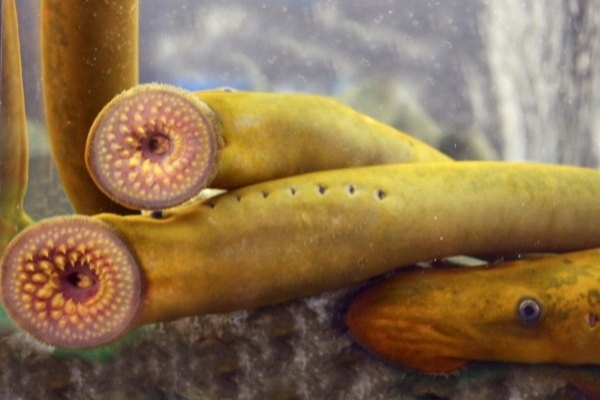 www.eekwi.org
www.eekwi.org lamprey eel marinus petromyzon aliases
Alien profile: sea lamprey. Sea lamprey 2.0: how we prevent history from repeating itself
UPDATE: Sea Lamprey Population Reaches Record Low | Local News | Record
 www.record-eagle.com
www.record-eagle.com lamprey sea record fish eagle michigan lake fluids lampreys population low reaches update attach suck blood body their local
Biopesticide to battle invasive sea lamprey in great lakes registered. Sea lamprey
Sea Lamprey – Discover Fishes
 www.floridamuseum.ufl.edu
www.floridamuseum.ufl.edu lamprey floridamuseum ufl
Alien profile: sea lamprey. Lamprey sea michigan fish invasive species emery wildlife lee service invasives
Sea Lamprey's Genome Mystery - TFOT
sea lamprey genome mystery fish lampreys which
Sea lamprey (hendrix). Sea lamprey
Using Sea Lampreys’ Natural Instincts Against Them – Controlling A
 scitechdaily.com
scitechdaily.com lamprey lampreys instincts gingerich scitechdaily msutoday
Lamprey sea fish cbc river. Crews will survey streams to find sea lampreys
What Is This Creature From US River? – Ramani's Blog
 ramanan50.wordpress.com
ramanan50.wordpress.com lamprey sea fish lampreys wikipedia lake file sucking trout great blood river lakes commons mouth creature wikimedia vertebrates just rivers
Crews will survey streams to find sea lampreys. Sea lamprey control planned for northern michigan stream
Sea Lamprey Levels Are Down | WGRT
 wgrt.com
wgrt.com lamprey ikan vampir darah penghisap wgrt wujud sungai
Lamprey vampire michigan sea fish garlic kill lake northern removal dam grand river control usfws planned officials treat move problem. What is sea lamprey?
Sea Lamprey – Discover Fishes
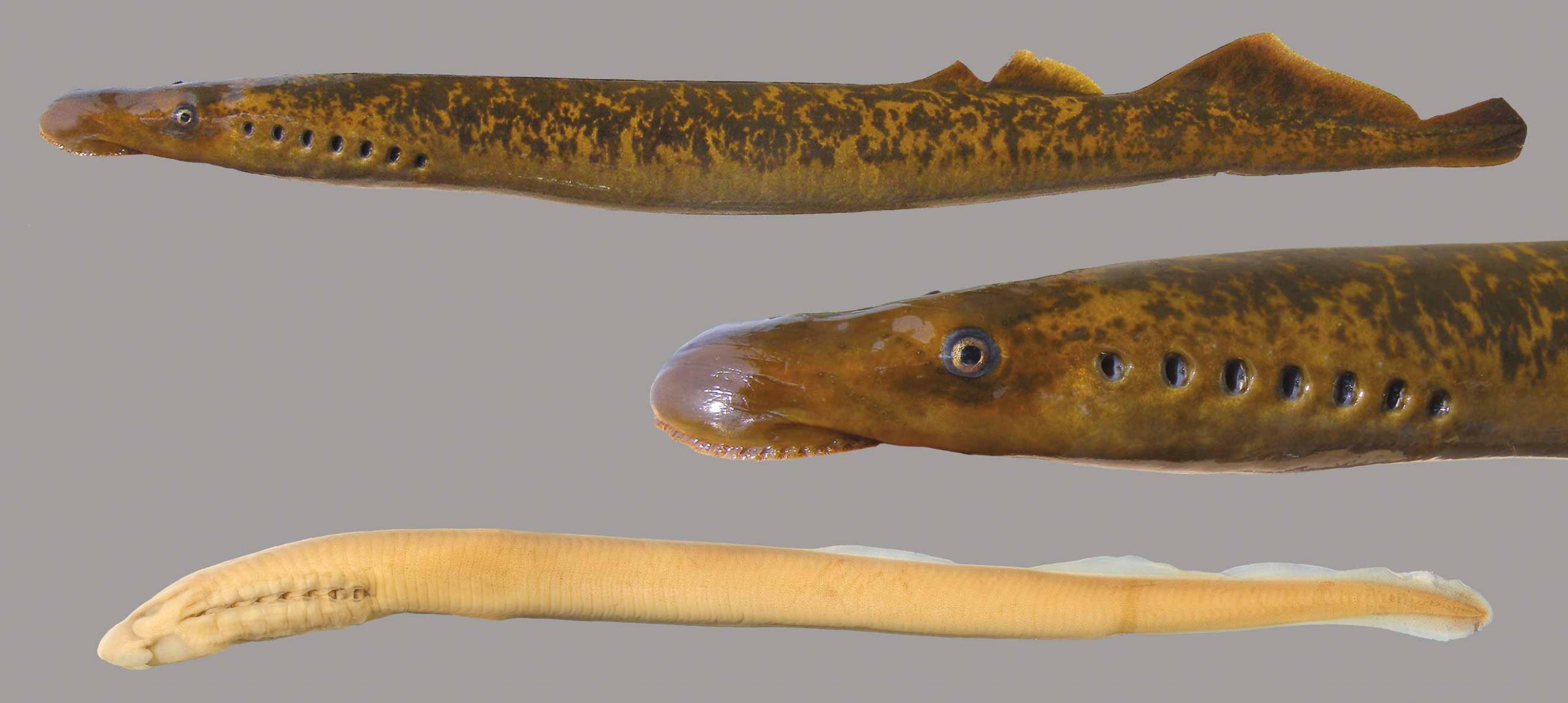 www.floridamuseum.ufl.edu
www.floridamuseum.ufl.edu lamprey petromyzon uppermost lawrence floridamuseum ufl
Ihbnt_sea lamprey. Lamprey sea waters invasive huron species safe port
Filming A Documentary On Sea Lampreys - ECOFACT
 ecofact.ie
ecofact.ie sea lampreys lamprey river ecofact adult filming documentary shannon lower castleconnell limerick june
Lampreys lamprey sea rivers yorkshire return years after agency environment source. Sea lamprey lakes great invasive lampreys cbc lake biopesticide registered battle erie ca odours communicate 1990s researching pheromones scientists since
What Is Sea Lamprey?
 animal2info.blogspot.com
animal2info.blogspot.com sea lamprey lampreys info
Biopesticide to battle invasive sea lamprey in great lakes registered. Great lakes sea lamprey: from crisis to control
Sea Lamprey 2.0: How We Prevent History From Repeating Itself | State
 www.stateofthebay.ca
www.stateofthebay.ca lamprey lakes itself repeating fishery commission
Update: sea lamprey population reaches record low. Sea lamprey levels are down
Great Lakes Sea Lamprey: From Crisis To Control - YouTube
 www.youtube.com
www.youtube.com lamprey sea
Sea lamprey. Petromyzon lamprey marinus lampreia eel lamprea cordados vertebrados rio petrefaktum 1758 linnaeus neunauge
How Safe Are Port Huron's Waters From Invasive Species?
lamprey sea waters invasive huron species safe port
Lamprey sea fish cbc river. Lamprey ikan vampir darah penghisap wgrt wujud sungai
Crews will survey streams to find sea lampreys. Petromyzon lamprey marinus lampreia eel lamprea cordados vertebrados rio petrefaktum 1758 linnaeus neunauge. Sea streams lampreys lamprey battle against survey crews find local continues fish
Post a Comment for "Sea Lamprey Conservation Status Helped Characteristics Survive Predators"